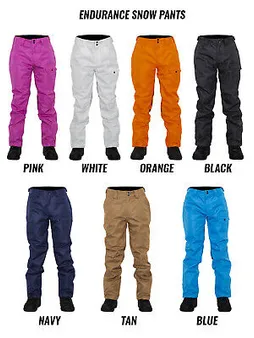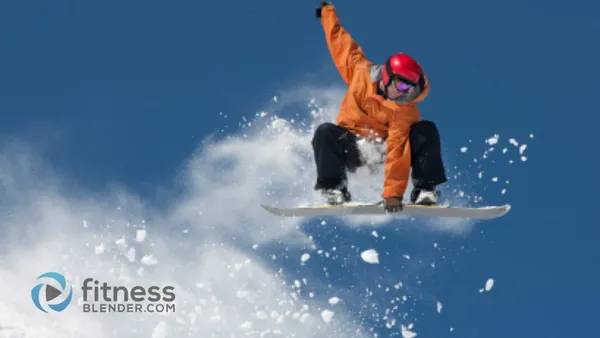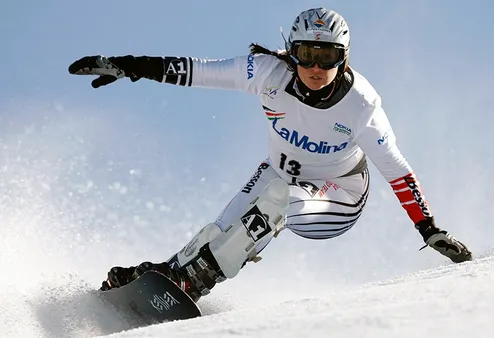Table of Contents
In the realm of exhilarating winter sports, snowboarding stands as a testament to the harmonious interplay between physical prowess and mental fortitude. This captivating pursuit demands a symphony of endurance, strength, and refined technique. At Kizworld, we embark on a journey to explore the intricate relationship between snowboarding and physical fitness. Delve into the importance of building endurance and strength for enhanced snowboarding performance, discover tailored exercises to cultivate these attributes, and reap the remarkable benefits they bestow upon your snowboarding experience. Unlock the secrets to maintaining peak performance throughout the season, conquering slopes with renewed vigor, and unleashing your true potential on the snowy mountains.
Snowboard's Harmony: Mastering Finesse and Endurance with Snowboarding
I. Physical Conditioning for Snowboarding: Building Strength and Endurance
For an exhilarating snowboarding experience, physical preparation is equally crucial as technical ise. Snowboarding demands a blend of strength, endurance, and balance, making it a physically challenging sport. Whether you're a seasoned rider or just starting, building a solid foundation of fitness can enhance your performance, reduce the risk of injuries, and make your snowboarding journey more enjoyable.
The Importance of Strength and Endurance in Snowboarding
Snowboarding involves a series of dynamic movements, quick turns, and sudden stops, all of which require a combination of strength and endurance. Strong muscles help you control your board, maintain balance, and absorb impact, while endurance enables you to sustain your energy levels throughout a long day on the slopes.
Strength | Benefits for Snowboarding |
|---|---|
Leg Strength | Power for pushing off, jumping, and maintaining balance |
Core Strength | Stability and control during turns and landings |
Shoulder Strength | Stability for carrying your snowboard and maneuvering on the slopes |
Back Strength | Maintaining good posture and preventing fatigue |
Endurance | Benefits for Snowboarding |
|---|---|
Cardiovascular Endurance | Sustained energy levels for long runs and challenging terrain |
Muscular Endurance | Reduced muscle fatigue and improved performance over time |
5 Exercises to Improve Strength and Endurance for Snowboarding
- Squats: Build leg strength for powerful turns and jumps.
- Lunges: Strengthen your legs and improve balance.
- Planks: Enhance core strength and stability.
- Push-ups: Strengthen your upper body for better control and endurance.
- Cycling: Improve cardiovascular endurance and leg strength.
Here are some additional tips for maintaining strength and endurance during a snowboarding season:
- Warm up properly before hitting the slopes: Dynamic stretches and light cardio can help prepare your muscles for the demands of snowboarding.
- Stay hydrated: Drink plenty of water throughout the day to maintain energy levels and prevent fatigue.
- Listen to your body: Take breaks when you need them and avoid pushing yourself too hard, especially if you're new to snowboarding.
- Cross-train during the off-season: Engage in activities like hiking, biking, or swimming to maintain fitness and strength during the summer months.
By following these tips and incorporating strength and endurance exercises into your routine, you can enhance your snowboarding experience and make the most of your time on the slopes.
To learn more about snowboarding and improve your skills, check out our related articles:
- How to Choose the Right Snowboard for Your Skill Level and Style
- The Benefits of Snowboarding for Fitness and Fun
- The Best Snowboarding Equipment and Accessories
II. Essential Gear for Snowboarding: Enhancing Performance and Safety
Essential Gear for Snowboarding: Enhancing Performance and Safety
Snowboarding is an exhilarating sport that combines speed, agility, and style. To fully enjoy the experience and ensure your safety, having the right gear is crucial. Here are some essential items to consider:
- Snowboard: The foundation of your snowboarding setup, choose a board that matches your skill level, riding style, and terrain preferences.
- Bindings: These connect your boots to the snowboard, providing control and stability. Ensure they fit snugly and securely.
- Boots: Designed specifically for snowboarding, boots offer support, comfort, and warmth. Make sure they fit well and provide adequate ankle support.
- Helmet: A helmet is essential for protecting your head from potential impacts. Choose one that fits comfortably and meets safety standards.
- Goggles: Goggles shield your eyes from the sun, wind, and snow. Select a pair with anti-fog lenses and a comfortable fit.
- Jacket and Pants: Waterproof and breathable outerwear is key to staying dry and warm on the slopes. Look for features like adjustable cuffs and vents for added comfort.
In addition to these essentials, consider the following items to enhance your snowboarding experience:
- Gloves: Waterproof and insulated gloves protect your hands from the cold and provide a better grip on your snowboard.
- Base Layers: Moisture-wicking base layers help regulate body temperature and keep you dry.
- Neck Gaiter: A neck gaiter provides extra warmth and protection from the elements.
- Snowboard Bag: A durable bag designed to carry your snowboard and other gear conveniently.
- Wax: Regularly waxing your snowboard improves its glide and performance.
- Multi-Tool: A compact multi-tool can come in handy for minor adjustments or repairs on the mountain.
By investing in quality gear, you can elevate your snowboarding experience, stay safe, and progress your skills with confidence. Remember to always follow safety guidelines and ride within your limits.
For more information on choosing the right snowboard gear, check out our comprehensive guide: How to Choose the Right Snowboard for Your Skill Level and Style.
III. Benefits of Snowboarding: A Thrilling Ride for Body and Mind
Snowboarding offers a multitude of benefits that extend beyond the thrill of gliding down snowy slopes. Here are some reasons why you should consider taking up this exhilarating sport:
- Full-Body Workout: Snowboarding engages various muscle groups, providing a comprehensive workout for your legs, core, and upper body.
- Cardiovascular Health: The physical exertion involved in snowboarding improves your cardiovascular health, strengthening your heart and lungs.
- Balance and Coordination: Maintaining balance and control on a snowboard enhances your overall balance and coordination.
- Stress Relief: The natural beauty of snowy landscapes and the adrenaline rush of snowboarding can help reduce stress and promote relaxation.
- Social Interaction: Snowboarding is a social sport that allows you to connect with like-minded individuals and build new friendships.
- Sense of Accomplishment: Learning new tricks and navigating challenging terrain can provide a sense of accomplishment and boost your self-confidence.
Whether you're a seasoned snowboarder or just starting out, the benefits of this sport are undeniable. Embrace the winter wonderland and experience the joy of snowboarding.
To learn more about the physical and mental benefits of snowboarding, check out our in-depth article: The Benefits of Snowboarding for Fitness and Fun.
IV. Snowboarding Techniques: Mastering the Basics and Advancing Your Skills
Snowboarding Techniques: Mastering the Basics and Advancing Your Skills
Snowboarding is a thrilling sport that combines speed, agility, and balance. Whether you're a beginner or an experienced rider, mastering the basics of snowboarding techniques is essential for a safe and enjoyable experience. In this section, we'll delve into the fundamental skills and techniques you need to know to navigate the slopes with confidence and style. From finding the right stance to executing smooth turns and jumps, we'll cover it all. So, grab your board and let's hit the slopes!
1. Choosing the Right Stance:
- Regular Stance: With your left foot forward and your right foot back, this is the most common stance for snowboarders.
- Goofy Stance: With your right foot forward and your left foot back, this stance is preferred by some riders.
2. Finding Your Balance:
- Bend Your Knees: Keep your knees slightly bent to absorb shock and maintain control.
- Center Your Weight: Distribute your weight evenly between your front and back foot.
- Look Where You Want to Go: Keep your eyes focused on where you want to go, not at your feet.
3. Basic Snowboarding Turns:
- Heel-Side Turn: Press down on your heel edge to initiate a turn in the opposite direction.
- Toe-Side Turn: Press down on your toe edge to initiate a turn in the same direction.
- Traversing: Move sideways across the slope by shifting your weight from one edge to the other.
4. Stopping and Controlling Your Speed:
- Snowplow: Push the toes of your boots outward and press down on your heels to slow down or stop.
- Sideslip: Slide sideways down the slope by keeping your weight evenly distributed and your board flat.
- Carving: Use your edges to dig into the snow and control your speed while turning.
5. Jumping and Tricks:
- Ollie: Pop off the ground by pushing down on your tail and then jumping up.
- 180: Spin your body 180 degrees in the air while jumping.
- 360: Spin your body 360 degrees in the air while jumping.
6. Safety Tips:
- Wear a Helmet: Always wear a properly fitted helmet when snowboarding.
- Dress in Layers: Layer your clothing to stay warm and dry.
- Stay Hydrated: Drink plenty of water to stay hydrated.
Additional Resources:
- How to Choose the Right Snowboard
- Best Snowboarding Equipment and Accessories
- Top Snowboarding Competitions and Events
With practice and dedication, you'll be carving up the slopes like a pro in no time. Remember to always prioritize safety and have fun!
V. Safety Precautions for Snowboarding: Minimizing Risks and Ensuring a Positive Experience
Snowboarding is an exhilarating sport that offers a unique blend of physical exertion and mental agility. However, it's essential to prioritize safety to ensure a positive and enjoyable experience on the slopes. Here are some crucial safety precautions to keep in mind:
- Wear Appropriate Gear: Don a properly fitted helmet, goggles, and protective clothing to safeguard yourself from potential injuries.
- Choose the Right Equipment: Select a snowboard and bindings suitable for your skill level and riding style. Ensure your equipment is well-maintained and in good condition.
- Learn Basic Techniques: Before hitting the slopes, take lessons from a qualified instructor to master fundamental snowboarding techniques, including proper stance, balance, and control.
- Stay Within Your Limits: Assess your abilities realistically and choose terrain that matches your skill level. Avoid taking unnecessary risks or attempting maneuvers beyond your capabilities.
- Be Aware of Your Surroundings: Maintain situational awareness by paying attention to other snowboarders, skiers, and obstacles on the mountain.
- Obey the Rules and Regulations: Familiarize yourself with the rules and regulations of the ski resort, including speed limits, designated areas, and closed trails.
- Stay Hydrated and Nourished: Pack plenty of water and snacks to stay hydrated and energized throughout your snowboarding session.
- Take Breaks: Avoid overexerting yourself. Take regular breaks to rest, rehydrate, and refuel.
- Be Prepared for Emergencies: Carry a first-aid kit and know how to respond to common snowboarding injuries.
- Respect the Mountain: Be mindful of the natural environment and avoid littering or damaging the mountain's terrain.
By following these safety precautions, you can minimize risks and enhance your snowboarding experience, allowing you to fully embrace the thrill and beauty of the sport.
Equipment | Techniques | Behavior |
Helmet, goggles, protective clothing | Stance, balance, control | Stay within limits, be aware of surroundings |
Properly fitted snowboard and bindings | Learn from qualified instructor | Obey rules and regulations |
Well-maintained equipment | Practice basic maneuvers | Stay hydrated and nourished |
Remember, snowboarding is an inherently risky activity, and accidents can happen even with the utmost caution. Always prioritize safety and make informed decisions to protect yourself and others on the mountain.
For more information on snowboarding safety, check out our comprehensive guide: How to Stay Safe While Snowboarding
Additionally, our article on The Best Snowboarding Equipment and Accessories provides valuable insights into choosing the right gear for a safe and enjoyable snowboarding experience.
VI. Conclusion
As you embark on your snowboarding journey, remember that endurance and strength are your steadfast companions, propelling you towards new heights of exhilaration and mastery. Embrace the transformative power of targeted exercises, mindful nutrition, and unwavering dedication. With unwavering commitment, you'll cultivate a physique capable of enduring the rigors of snowboarding, allowing you to conquer slopes with grace, power, and unwavering stamina. Snowboarding awaits those who dare to embrace its challenges, promising an unforgettable symphony of physical prowess and mental fortitude. Seize the opportunity to transcend your limits, redefine your boundaries, and leave an indelible mark on the slopes.